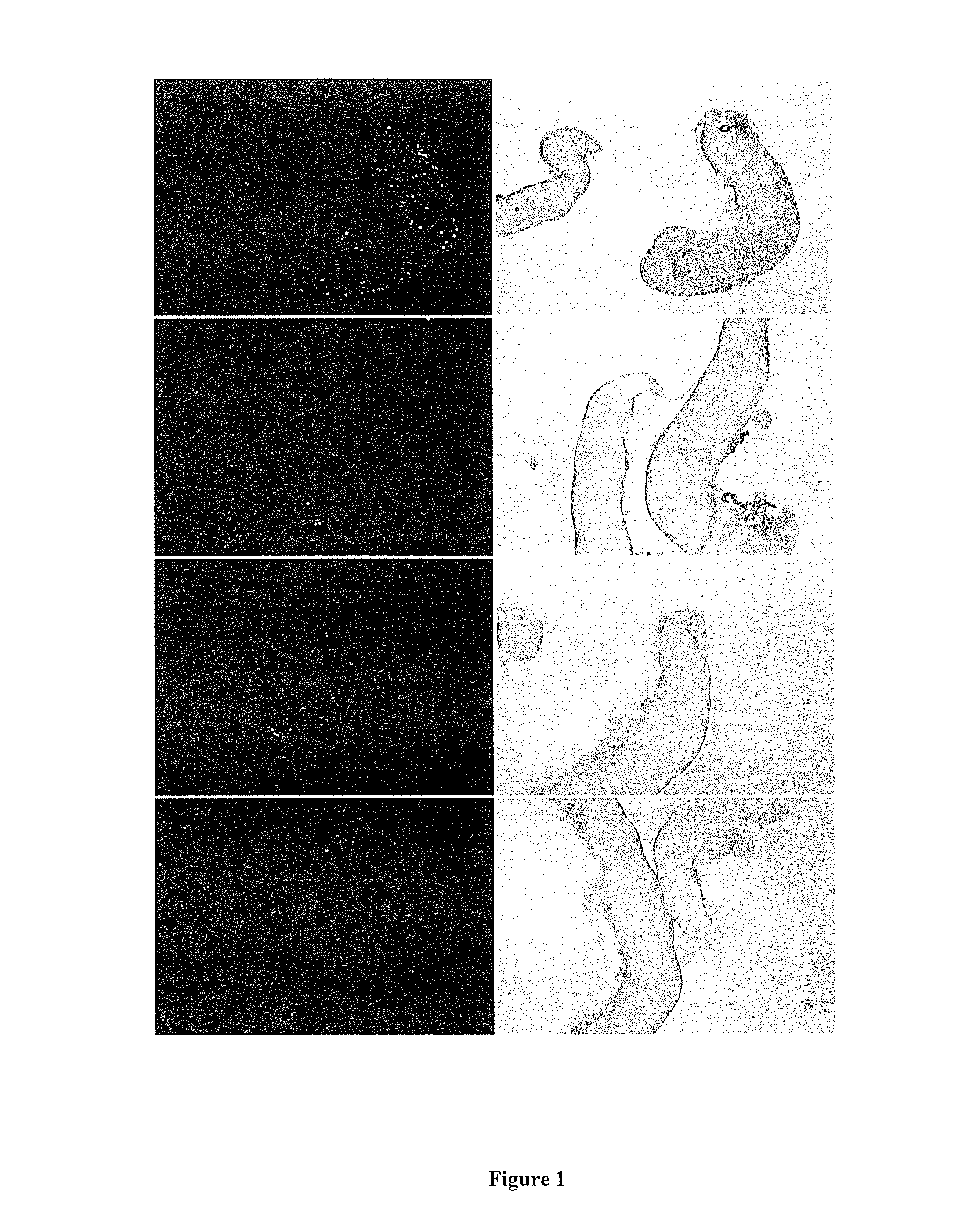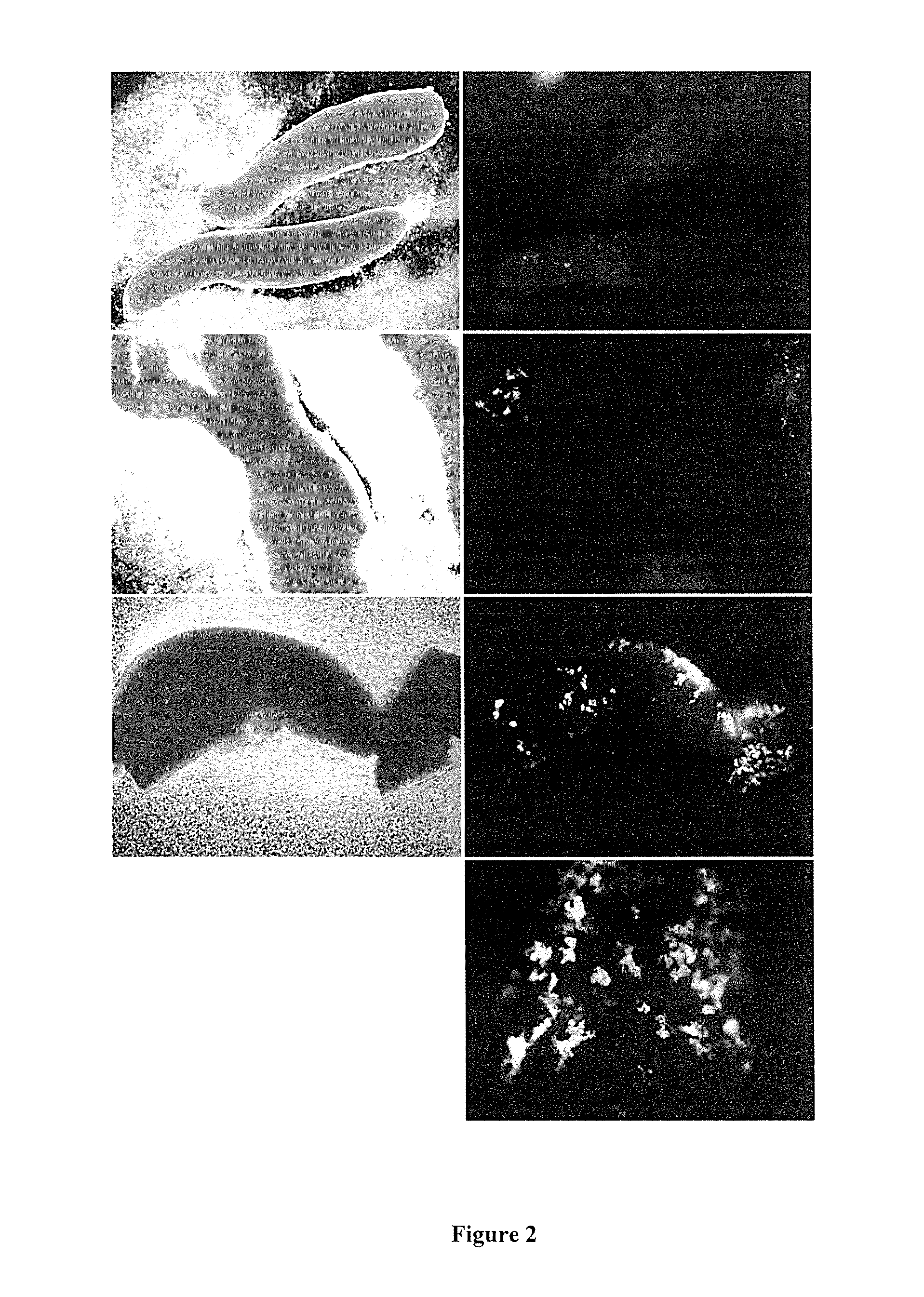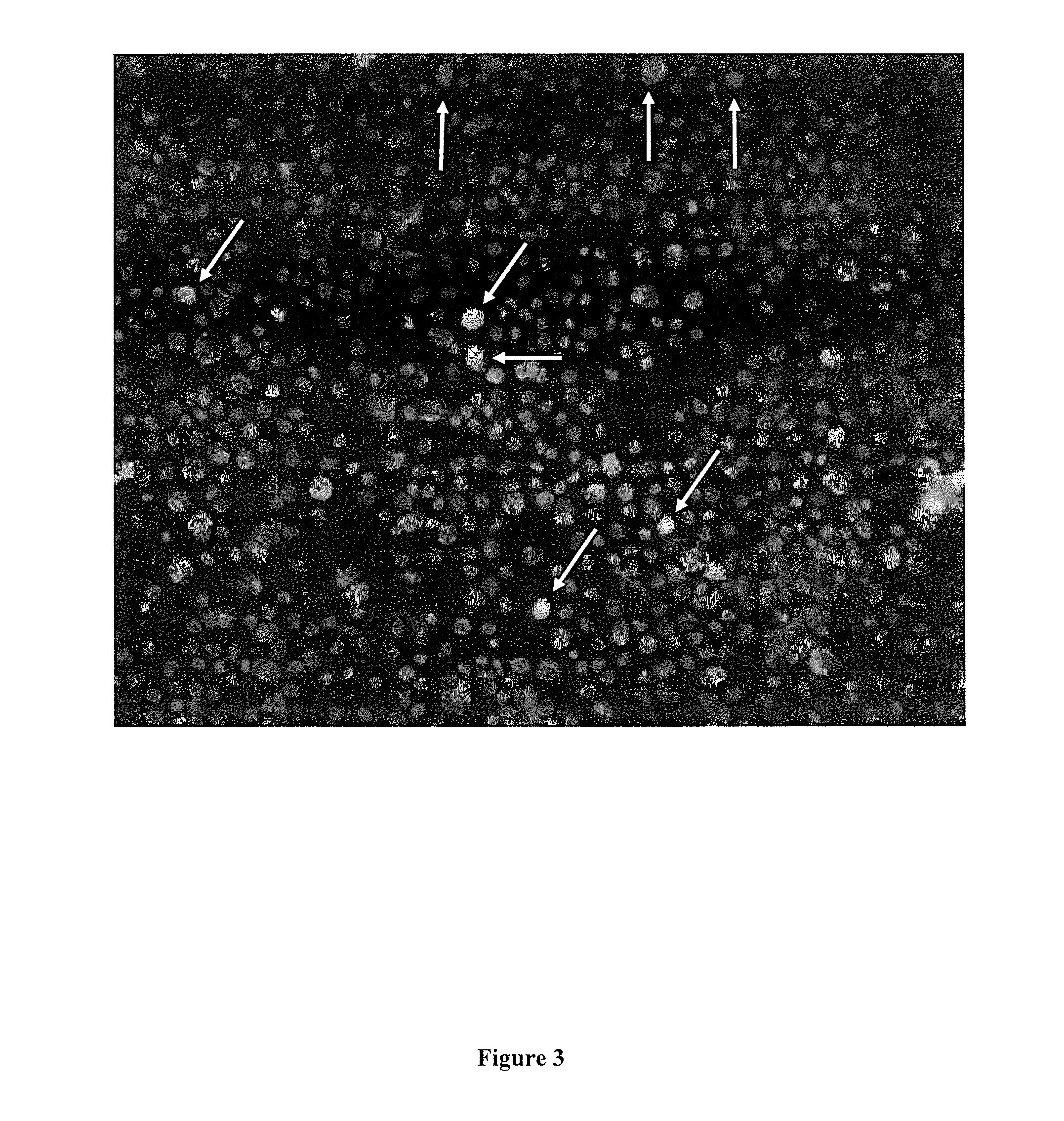Cell Transfection Method
a cell and transfection technology, applied in the field of cell transfection methods, can solve the problems of inability to replicate incompetent variants, high or repeated dosage, defective virus constructs can pose some risk of recombining with endogenous virus envelopes, etc., to reduce the replication of viruses, increase the resistance of avians, and reduce the effect of virus replication
- Summary
- Abstract
- Description
- Claims
- Application Information
AI Technical Summary
Benefits of technology
Problems solved by technology
Method used
Image
Examples
example 1
Direct Injection of EGFP Expression Construct into Embryos
[0148]5.1 μg of a nucleic acid construct encoding enhanced GFP (EGFP) flanked by Tol2 sequences and 1.0 μg of a plasmid encoding the Tol2 transposase were complexed with 3 μl Lipofectamine 2000. The complexing of the nucleic acids and transfection reagent were carried out in a total volume of 90 μl of OptiMEM or OptiPRO media using the incubation times recommended by the manufacturer (Life Technologies).
[0149]Following the final 20 minute incubation, 1-3 μm of the complex was injected into a blood vessel of Day 2.5 chicken embryos (Stages 13-17; Hamburger and Hamilton, 1951). No removal of blood was required. Access to the embryo was achieved by the removal of a small (10 mm) section of shell. After injection the hole was sealed with a 20 mm square of parafilm.
[0150]EGFP expression was observed at Day 7 and Day 14 in most gonads at varying levels. Cells dissociated from gonads and green cells also shown to be PGCs (FIGS. 1, 2...
example 2
In Vitro Optimisation of DNA to Transfection Reagent Ratios
[0151]Experiments were undertaken to test the optimal ratio of DNA:Lipofectamine 2000 and the volume of the media to make up the transfection complex. A DNA construct encoding EGFP and a single hairpin (shRNA) with flanking Tol2 sequences was complexed with Lipafectamine 2000 in OptiMEM volumes of 50, 40, 30 or 20 μl. The ratios of DNA (μg) to Lipofectamine 2000 (μl) used were as follows: 1:2, 2:4 and 4:8.
[0152]The complexes were transfected into chicken fibroblast (DF-1) cells and analysed fro the expression of EGFP. Results indicated (not shown) that a ratio of DNA (μg):Lipofectamine 2000 of 1:2 in 30 μm medium worked slightly better than a ratio of 2:4 in 50 μl.
[0153]The in vitro data was subsequently confirmed in embryos. 0.33 μg of DNA construct comprising the Tol2 transposon, 0.66 μg transposase plasmid, and 2 μl Lipofectamine 2000 were complexed in OptiMEM and injected directly into chicken embryos. All living embryos...
example 3
Testing FuGene Transfection Reagent
[0154]FuGene (Promega) was tested as a transfection reagent using a DNA:Fugene ratio similar to that recommended by the manufacturer for cell culture transfection. The DNA construct complexed with FuGene comprised an EGFP expression cassette with flanking Tol2 sequences. The complex (0.66 μg of the EGFP-Tol2 construct, 1.33 μg transposase plasmid, 6 μl FuGene) was injected directly into 15 embryos. One of the embryos showed very small amounts of EGFP expression in the gonads at Day 14. This experiment was repeated, and at Day 12 all 10 embryos that were injected were still alive. Two of the embryos had a couple of green cells in the gonads.
PUM
| Property | Measurement | Unit |
|---|---|---|
| Dimensionless property | aaaaa | aaaaa |
| Temperature | aaaaa | aaaaa |
| Mass | aaaaa | aaaaa |
Abstract
Description
Claims
Application Information
 Login to View More
Login to View More - R&D
- Intellectual Property
- Life Sciences
- Materials
- Tech Scout
- Unparalleled Data Quality
- Higher Quality Content
- 60% Fewer Hallucinations
Browse by: Latest US Patents, China's latest patents, Technical Efficacy Thesaurus, Application Domain, Technology Topic, Popular Technical Reports.
© 2025 PatSnap. All rights reserved.Legal|Privacy policy|Modern Slavery Act Transparency Statement|Sitemap|About US| Contact US: help@patsnap.com



